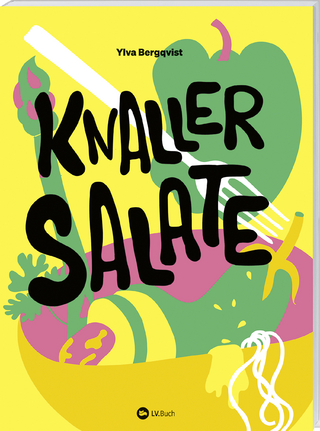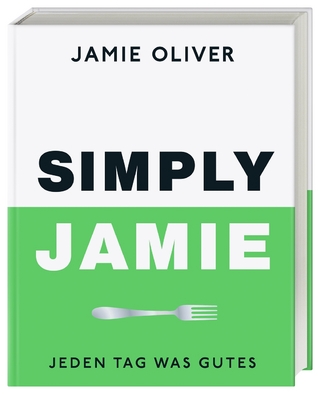
DIY Mushroom Cultivation
New Society Publishers (Verlag)
978-0-86571-895-1 (ISBN)
"Offering clear and comprehensive instructions for low-tech growing for a range of budgets, interests, and scales, this book offers practical inspiration and a sense that "hey, I can do this!"
–— DANIELLE STEVENSON, owner, DIY Fungi
DIY Mushroom Cultivation is full of proven, reliable, low-cost techniques for home-scale cultivation that eliminate the need for a clean-air lab space to grow various mushrooms and their mycelium.
Beautiful full-color photos and step-by-step instructions accompany a foundation of mushroom biology and ecology to support a holistic understanding of the practice. Growing techniques are applicable year-round, for any space from house to apartment, and for any climate, budget, or goal. Techniques include:
Setting up a home growing space
Inexpensive, simple DIY equipment
Culture creation from mushroom tissue or spores
Growing and using liquid cultures and grain spawn
Growing mushrooms on waste streams Indoor fruiting
Outdoor mushroom gardens and logs
Harvesting, processing, tinctures, and cooking.
Whether you hunt mushrooms or dream about growing and working with them but feel constrained by a small living space, DIY Mushroom Cultivation is the ideal guide for getting started in the fascinating and delicious world of fungiculture.
Willoughby Arevalo is a mycologist, artist, kitchen wizard, father, and educator who made friends with mushrooms as a young child and has been showing people how to work with fungi for the last decade. He’s been a presenter and co-organizer of the Radical Mycology Convergences of 2012, 2014, and 2016, taught at The Art and Science of Mycorenewal, Recomposing Life and Walking the Mycelial Web intensive mycology courses, and has led workshops and forays at the New Moon Mycology Summit, Telluride Mushroom Festival, and Sunshine Coast Mushroom Festival. Willoughby regularly teaches community workshops locally and internationally on mushroom cultivation, ecology, identification, foraging, and cooking, and serves on the Education Committee of the Vancouver Mycological Society. He works on an organic vegetable farm, makes art in relation with fungi, and grows mushrooms at his home in Vancouver, BC.
Acknowledgments
Introduction
Mushrooms and Humans: Past, Present, and Future
A Bit about Me and My Approach to Mushroom Cultivation
1 Mushroom Basics
What Are Mushrooms?
Mushrooms in Ecosystems
What Mushrooms Need to Survive and Thrive
2 Overview of the Cultivation Process
Cultivation Flow
Preparation
3 Workspaces, Tools, and Equipment
Lab Infrastructure and Aseptic Transfer Spaces: Flow Hoods, Still Air Boxes, and More
The Lab Environment and Tools
Where to Inoculate Bulk Substrates
Where to Incubate Growing Mycelium
Fruiting Space: Factors to Consider
Options for Home-Scale Fruiting Chambers
Environmental Control in Fruiting Spaces
Other Spaces
4 Sanitation and Techniques to Avoid Contamination
Vectors of Contamination and Management Strategies
Common Contaminants: Recognition and Management
5 Starting and Maintaining Cultures
Get Cultured
Liquid Culture
Agar Culture
Long-Term Culture Storage Methods
6 Making and Using Grain Spawn
Making Grain Spawn
Using Grain Spawn
7 Fruiting Substrate Formulation and Preparation
Containers for Mycelial Growth and Fruiting
The Substrates
Substrate Treatments
Sterilization
Pasteurization and Alternatives
8 Outdoor Growing and Mushroom Gardening
Growing Mushrooms on Logs and Stumps
Mushroom Beds
Next-Level Applications
9 Harvest, Processing, and Use
When and How to Harvest
Basic Cooking Techniques
Preservation Methods
Mushrooms and Mycelium for Medicine
In Conclusion: Substrate for Thought—Toward Further Applications
Mycopermaculture
Mycoremediation on a Home Scale
Mycoarts and Fungi as Functional Materials
Community-Based Cultivation Efforts
Appendix 1: Species Profiles
Agrocybe aegerita— Pioppino
Coprinus comatus—Shaggy Mane
Cordyceps militaris—Caterpillar Fungus
Flammulina velutipes and allies—Enoki
Ganoderma lucidum and allies—Reishi
Hericium species—Lion's Mane and allies
Hypsizygus tessulatus—Shimeji
H. ulmarius—Elm Oysters
Lentinula edodes—Shiitake
Pholiota nameko and allies—Nameko
Pleurotus species—Oyster Mushrooms
Stropharia rugoso-annulata—Wine Cap
Trametes versicolor—Turkey Tail
Appendix 2: Resources
General
Annual Mycology Gatherings
Bibliography
Index
About the Author and Illustrator
A note about the publisher
| Erscheinungsdatum | 05.11.2018 |
|---|---|
| Reihe/Serie | Homegrown City Life |
| Zusatzinfo | 60 Halftones, color |
| Verlagsort | Gabriola Island |
| Sprache | englisch |
| Maße | 191 x 229 mm |
| Gewicht | 518 g |
| Themenwelt | Sachbuch/Ratgeber ► Essen / Trinken ► Themenkochbücher |
| Sachbuch/Ratgeber ► Natur / Technik ► Garten | |
| Sachbuch/Ratgeber ► Natur / Technik ► Natur / Ökologie | |
| Naturwissenschaften ► Biologie ► Mykologie | |
| ISBN-10 | 0-86571-895-4 / 0865718954 |
| ISBN-13 | 978-0-86571-895-1 / 9780865718951 |
| Zustand | Neuware |
| Haben Sie eine Frage zum Produkt? |
aus dem Bereich


